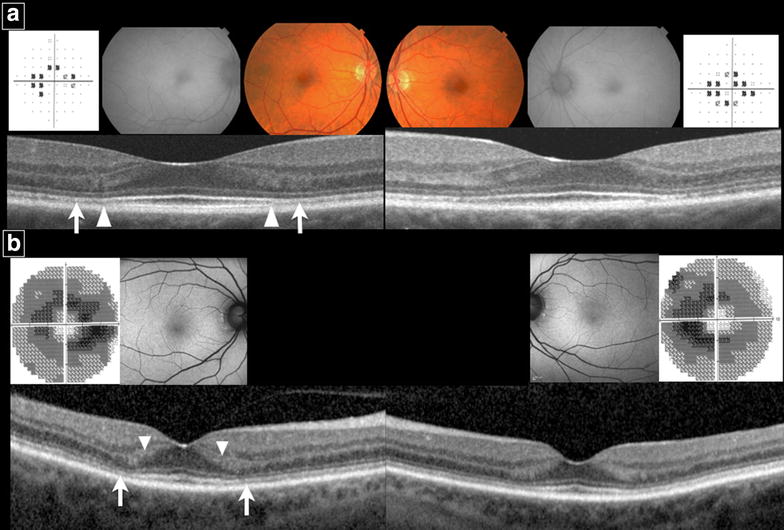Fig. 4.

Examples of two Early patients. a E1, fundus photograph shows mild parafoveal RPE changes in each eye with unremarkable FAF. HVF 10-2 shows incomplete parafoveal ring scotoma in right eye and parafoveal ring scotoma in left eye. SD-OCT of each eye shows no clear disruption of parafoveal EZ. However, reduced reflectivity of the parafoveal EZ (arrow) on both sides of the fovea is observed and enhances the appearance of the foveal EZ. Abrupt discontinuation of the parafoveal interdigitation zone (IZ) (arrowhead) is also observed on both sides of the fovea. b E4, Fundus autoflourescence is unremarkable. HVF 10-2 shows incomplete parafoveal ring scotomas in each eye. No clear disruption of the parafoveal EZ is seen on SD-OCT. However, the reflectivity of the parafoveal EZ is diminished (arrow) and enhances the appearance of the foveal EZ. There is also thinning of the parafoveal outer nuclear layer causing broadening of reflectivity of the parafoveal Henle’s fiber layer (arrowhead) on both sides of the fovea
